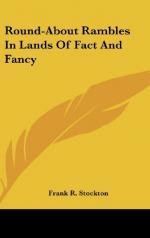So we will not meddle with hens’ nests, robins’ nests, and all the nests, big and little, that we find about our homes, for they are the “potatoes” of a subject like this, but will try and find some nests that are a little out of the way, and curious.
But we must stop—just one moment—before we leave home, and look at a wren’s nest.
The Wren, although a very common little bird with us, does not build a common nest. She makes it round, like a ball, or a woolly orange, with a little hole at one side for a door. Inside, it is just as soft and comfortable as anything can be. Being such a little bird herself, she could not cover and protect her young ones from cold and danger so well as the larger cat-birds and robins, and her nest is contrived so that there will not be much covering to do.
[Illustration]
That beautiful bird, the Baltimore Oriole, which may be familiar to some of you, makes its nest somewhat on the plan of the wren, the similarity consisting in the fact that the structure is intended to shelter both parent and young. The oriole, which is a great deal larger than a wren, builds a much larger nest, forming it like a bag, with a hole in one end, and hangs it on the branch of a tree.
[Illustration]
It is scarcely possible for any harm to come to the young orioles, when they are lying snugly at the bottom of the deep nest and their mother is sitting on a twig near by, ready to protect them at the hazard of her life.
But, for all the apparent security of this nest, so deep, so warm, so firmly secured to the twigs and branches, the little orioles are not entirely safe. Their mother may protect them from rain and cold; from winged enemies and creeping serpents, but she cannot defend them against the attacks of boys and men. An oriole’s nest is such a curious structure, and the birds are known to be of such fine form and gorgeous plumage, that many boys cannot resist the temptation of climbing up after them and, if there are young ones within, of carrying the whole affair away in order to try and “raise” the young birds. Sometimes the nest is put in a cage, where the old bird can come and feed its young, and in other cases the captor undertakes to do the feeding himself. I have seen experiments of this kind tried, but never knew the slightest success to follow them, and the attempt, generally useless, is always cruel.
But we must positively get away from home and look at some nests to which few or none of us are accustomed.
There, for instance, is the nest of the Burrowing-Owl, a native of South America and the regions west of the Rocky Mountains. This little bird, much smaller than our common owls, likes to live in the ground. But not having been provided by nature with digging appendages, he cannot make a hole or burrow for himself, and so he takes up his abode in the underground holes made by the little prairie-dogs for their own homes.




